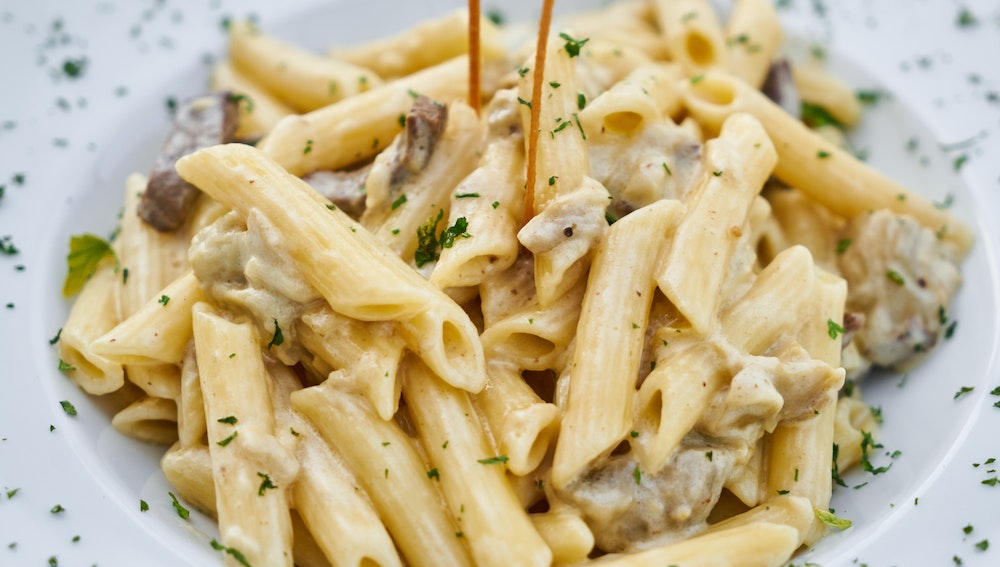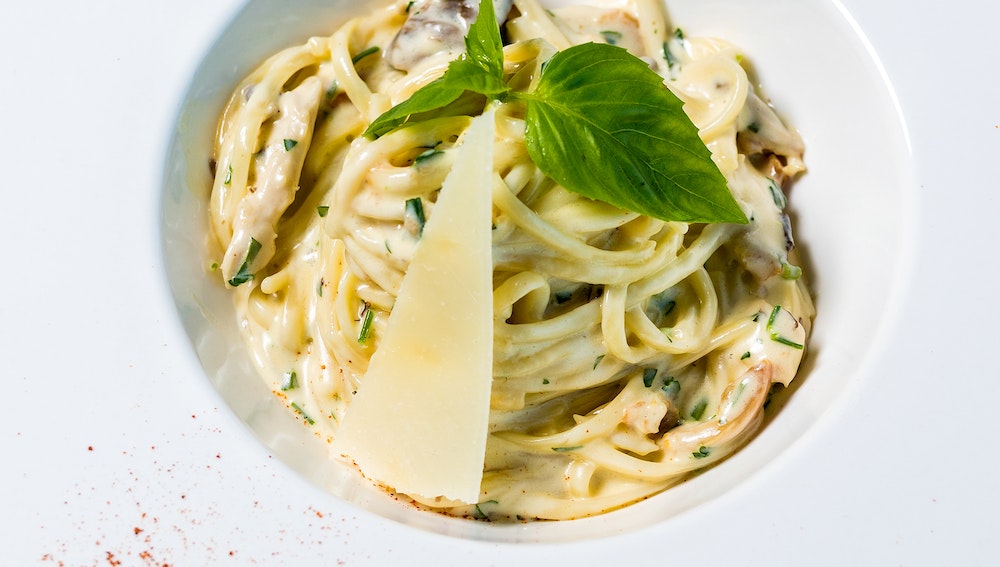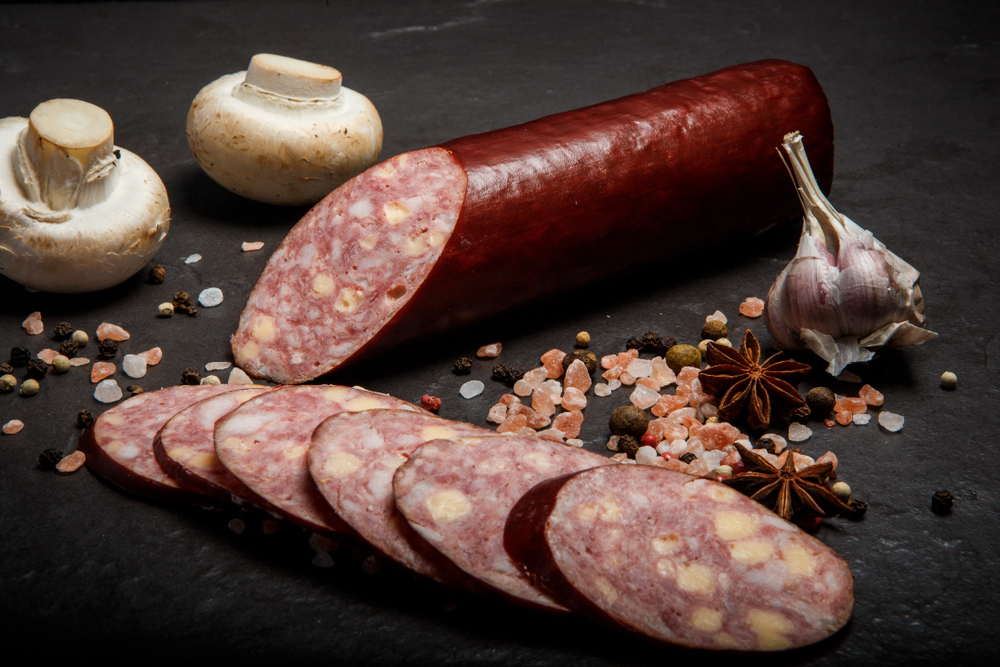Pasta salad is a staple dish for many households, especially during the summer months. It’s a refreshing and easy-to-make meal that can be customized with a variety of ingredients.
However, sometimes you might make too much pasta salad or want to prepare it ahead of time for a future event. In these cases, freezing pasta salad can be a great option to preserve it for later use.
Freezing pasta salad is possible, but it requires some important steps and precautions to ensure that the salad stays fresh and flavorful.
It’s important to understand the basics of freezing food and how to properly prepare and store pasta salad. By following the right steps, you can enjoy delicious pasta salad even when it’s not freshly made.
Key Takeaways
- Freezing pasta salad is a great way to preserve it for future use.
- Undercooking the pasta and freezing the ingredients separately can help maintain the texture and flavor of the salad.
- Pasta salad can be frozen for up to three months, but it’s important to properly store and thaw it before serving.
Understanding Pasta Salad

Pasta salad is a popular dish that is easy to make and perfect for summer gatherings, picnics, and potlucks. It is a versatile dish that can be made with different types of pasta, vegetables, meats, and dressings.
Understanding the different types of pasta salad and key ingredients is essential to creating a delicious and unique dish.
Types of Pasta Salad
There are many different types of pasta salad, each with its unique flavor and texture. Some popular types of pasta salad include:
- Classic pasta salad: made with elbow macaroni, cucumber, cheese, and vegetables like tomatoes and bell peppers, dressed with a simple salad dressing.
- Italian pasta salad: made with rotini pasta, salami, olives, bell peppers, and Parmesan cheese, dressed with Italian dressing.
- Greek pasta salad: made with penne pasta, feta cheese, tomatoes, cucumbers, red onion, and olives, dressed with a lemon vinaigrette.
- Caesar pasta salad: made with bowtie pasta, chicken, Parmesan cheese, croutons, and Caesar dressing.
Key Ingredients
The key ingredients in pasta salad are pasta, vegetables, meat, cheese, and dressing. The type of pasta used can affect the texture of the salad. Short, sturdy pasta like rotini, penne, and bowtie hold up well in pasta salad, while delicate pasta like angel hair can become mushy.
Vegetables like cucumber, tomatoes, bell peppers, carrots, and mushrooms add color, flavor, and texture to pasta salad. Cheese like feta, Parmesan, and mozzarella add richness and creaminess.
Meat like chicken, salami, and ham add protein and flavor. Salad dressing ties all the ingredients together and adds flavor.
It is essential to choose high-quality ingredients for pasta salad to ensure a delicious and satisfying dish. Fresh herbs like basil, parsley, and oregano can also be added for extra flavor.
Overall, understanding the different types of pasta salad and key ingredients is essential to creating a delicious and unique dish.
With the right ingredients and techniques, pasta salad can be a crowd-pleasing dish that is perfect for any occasion.
Freezing Basics

Why Freeze Pasta Salad
Freezing pasta salad is a great way to extend its shelf life. By freezing pasta salad, it can stay fresh for up to three months, which is longer than it would last in the refrigerator.
This is especially useful if you have made a large batch of pasta salad and want to save some for later.
The Process of Freezing
Before freezing pasta salad, there are a few important steps to follow. First, undercook the pasta by 1-2 minutes, so that it will hold its shape better when frozen. Next, freeze any water-based vegetables separately from the pasta to avoid sogginess.
If you are using a salad dressing, such as mayonnaise or vegan thousand island dressing, freeze it separately from the pasta. This will help to preserve the quality of the pasta salad.
When you are ready to freeze the pasta salad, place it in an airtight container or freezer bag. Be sure to label the container or bag with the date, so you can keep track of how long it has been frozen.
Defrosting Pasta Salad
To defrost pasta salad, remove it from the freezer and place it in the refrigerator overnight. This will allow it to defrost slowly and evenly. Alternatively, you can defrost it in the microwave, using the defrost setting. Be sure to stir the pasta salad occasionally during the defrosting process, to ensure that it defrosts evenly.
It is important to note that not all types of pasta salads freeze well. Creamy dressings, such as mayonnaise-based dressings, may separate when frozen and defrosted, which can affect the texture and flavor of the pasta salad. Oil-based dressings are better suited for freezing and defrosting.
Overall, freezing pasta salad is a great way to extend its shelf life and save it for later. By following these simple steps, you can ensure that your pasta salad stays fresh and delicious, even after being frozen.
Preparation Tips

When it comes to preparing pasta salad for freezing, there are a few things to keep in mind to ensure that the salad remains fresh and tasty even after being frozen. Here are some tips to help you prepare your pasta salad for freezing.
Cooking Pasta for Freezing
One of the most important things to keep in mind when preparing pasta salad for freezing is to undercook the pasta by a few minutes. This is because the pasta will continue to cook and absorb the dressing as it cools down. Undercooking the pasta will help it maintain its texture and shape when it is thawed and reheated.
To cook the pasta, bring a large pot of salted water to a boil. Add the pasta and cook it until it is al dente. Drain the pasta and rinse it under cold water to stop the cooking process.
Choosing Ingredients
When preparing pasta salad for freezing, it is important to choose fresh ingredients that have a low water content. This will help prevent the salad from becoming soggy when it is thawed.
Some good ingredients to include in your pasta salad include fresh vegetables, such as bell peppers, tomatoes, and cucumbers, as well as proteins like grilled chicken or shrimp. You can also add flavorful dressings like mayonnaise, sour cream, or pesto to give your salad a delicious taste.
Preventing Soggy Salad
To prevent your pasta salad from becoming soggy when it is thawed, it is important to take a few steps when preparing and storing it.
First, make sure to cool the pasta and other ingredients completely before mixing them together. This will help prevent condensation from forming inside the container, which can make the salad mushy.
You can also prevent your pasta salad from becoming too wet by storing any liquid ingredients, such as dressings or sauces, separately from the pasta and other ingredients.
When it is time to serve the salad, simply mix the ingredients together and add the liquid ingredients a few hours before serving to prevent the pasta from becoming soggy.
By following these preparation tips, you can ensure that your pasta salad remains fresh and delicious even after being frozen.
Reheating and Serving
Reheating Pasta Salad
When it comes to reheating pasta salad, there are a few things to keep in mind. First, it’s important to note that pasta salad with mayonnaise should not be left at room temperature for more than two hours.
This means that if you plan on reheating pasta salad, you should do so as quickly as possible to avoid the risk of foodborne illness.
One of the easiest ways to reheat pasta salad is in the microwave oven. To do this, simply transfer the pasta salad to a microwave-safe dish and cover it with a damp paper towel.
Microwave the pasta salad on high for 30-second intervals until it reaches the desired temperature. Be sure to stir the pasta salad between intervals to ensure even heating.
Alternatively, you can reheat pasta salad in a skillet on the stovetop. Add a small amount of olive oil or butter to the skillet and heat it over medium-high heat. Once the oil or butter is hot, add the pasta salad and stir it frequently until it’s heated through.
Serving Suggestions
Pasta salad is a versatile side dish that can be served in a variety of ways. It’s perfect for picnics, barbecues, and other outdoor gatherings, as it can be served cold and doesn’t require any additional heating.
To serve pasta salad as a side dish, simply transfer it to a serving bowl and garnish it with fresh herbs or chopped vegetables. You can also add a sprinkle of grated Parmesan cheese or a drizzle of balsamic vinegar for added flavor.
For a more substantial meal, pasta salad can be served as a main course. To do this, simply add grilled chicken, shrimp, or tofu to the pasta salad and toss it together. You can also add additional vegetables, such as cherry tomatoes or roasted red peppers, for added color and flavor.
Overall, pasta salad is a delicious and easy-to-make dish that can be enjoyed year-round. Whether you’re looking for a side dish for your 4th of July barbecue or a quick and easy lunch, pasta salad is sure to satisfy.
Storage and Shelf Life

When it comes to storing pasta salad, it is important to keep in mind the ingredients used in the recipe. Pasta salads that contain mayonnaise, eggs, or dairy products have a shorter shelf life and should not be kept in the fridge for more than two days.
However, if the salad has been kept at a safe temperature of 40°F or below, it may still be safe to eat beyond this timeframe.
If you have leftover pasta salad and want to store it for later use, it is recommended to transfer it to an airtight container and refrigerate it immediately. The salad should be consumed within three to five days, depending on the ingredients used.
If you want to freeze your pasta salad, it is possible to do so, but it may affect the texture and flavor of the salad. It is important to cook the pasta al dente and remove it from the heat a few minutes before the recommended time on the package. This will help the pasta retain its texture when thawed.
When freezing pasta salad, it is recommended to use a freezer-safe container and leave some space at the top to allow for expansion. The salad should be consumed within two to three weeks for best quality. It is not recommended to refreeze pasta salad once it has been thawed.
Overall, proper storage and handling of pasta salad is important to ensure food safety and quality. Always remember to refrigerate or freeze leftover salad promptly and discard any salad that has been left at room temperature for more than two hours.
Related post: Can You Freeze Chicken Salad
Frequently Asked Questions
Can you freeze pasta salad with cucumbers and tomatoes?
Yes, you can freeze pasta salad with cucumbers and tomatoes. However, it is important to note that the texture of the cucumbers and tomatoes may change once frozen and thawed.
To minimize this, it is recommended to blanch the vegetables before adding them to the salad.
Can you freeze pasta salad with ranch dressing?
Yes, you can freeze pasta salad with ranch dressing. However, it is important to note that the texture of the dressing may change once frozen and thawed. To prevent this, it is recommended to use a lighter dressing, such as a vinaigrette, or to add the dressing after thawing the salad.
Can you freeze pasta salad with pesto?
Yes, you can freeze pasta salad with pesto. Pesto is a great ingredient to use in pasta salads because it freezes well. However, it is recommended to add the pesto after thawing the salad to maintain its fresh flavor.
What is a freezable pasta salad recipe?
A freezable pasta salad recipe is one that uses ingredients that freeze well and can maintain their texture and flavor after being frozen and thawed.
Some examples of ingredients that freeze well include olives, roasted red peppers, and cooked chicken or shrimp. It is also recommended to use a lighter dressing, such as a vinaigrette, instead of a creamy dressing.
Can you freeze tuna pasta salad?
Yes, you can freeze tuna pasta salad. However, it is important to note that the texture of the tuna may change once frozen and thawed. To minimize this, it is recommended to use canned tuna instead of fresh tuna and to add the tuna after thawing the salad.
How long will pasta salad last in the fridge?
Pasta salad will typically last in the fridge for 3-5 days if stored properly in an airtight container. It is important to keep the salad refrigerated and to discard any leftovers that have been left at room temperature for more than 2 hours.







